The following account is written by Willie’s daughter Eileen McDonald.
Willie now lives with her at home on the sea front in the Argyle and Bute town of Helensburgh, which is on The Firth of Clyde.
William “Willie” McDonald and his National Service with the Royal Engineers
Nowadays my father’s memory is, as he puts it himself, “blitzed”, a rather fitting expression from one who lived through the events of the Second World War on Clydeside. This means that this account of his National Service years has involved supplementing what he recalls with family recollections of memories he has shared in the past, plus some detective work. Amongst the memories are those kindly contributed by my aunt, Edith McDonald, my father’s younger sister.
To prevent confusion, I should explain that I have referred to my father as Willie in this article, because this version of William was and is used by his parents and sisters, at school, in the 214 and during his National Service days. Then he met his future wife, Bunty Campbell, who, it seems, preferred the name Bill, and, just for once, she got her own way, with the result that his post 1950 friends, work colleagues and later piping contacts all know him as Bill. Writing Christmas cards with him involves the extra challenge of remembering which name the recipient knows him as!
Eileen McDonald
It would seem that Friday 10th August 1945 was a day of mixed emotions for the McDonald family living at 1595 Dumbarton Road in Scotstoun. On one hand, there were understandable feelings of sadness and anxiety because the son of the house, William, known to all as Willie, was leaving to start his National Service that day. On the other hand, as his little sister Edith recalls, the family was relieved to hear the announcement of the Japanese Government’s intention to surrender under the terms of the Potsdam Agreement. This apparently set off some early VJ celebrations, but, most importantly for the McDonalds, it meant that Willie would not be in combat in the Far East.
Willie recalls his initial training as having involved a rather choppy sea journey to Northern Ireland for initial training, but Edith recalls him having taken a tram to Glasgow Central and a train via Edinburgh down to Darlington to do initial training in County Durham, so this point is unclear. It seems at any rate that by December 1945 he was in Yorkshire, judging by a group photograph taken of him with his fellow Royal Engineer trainees by a photographer based in Clitheroe.
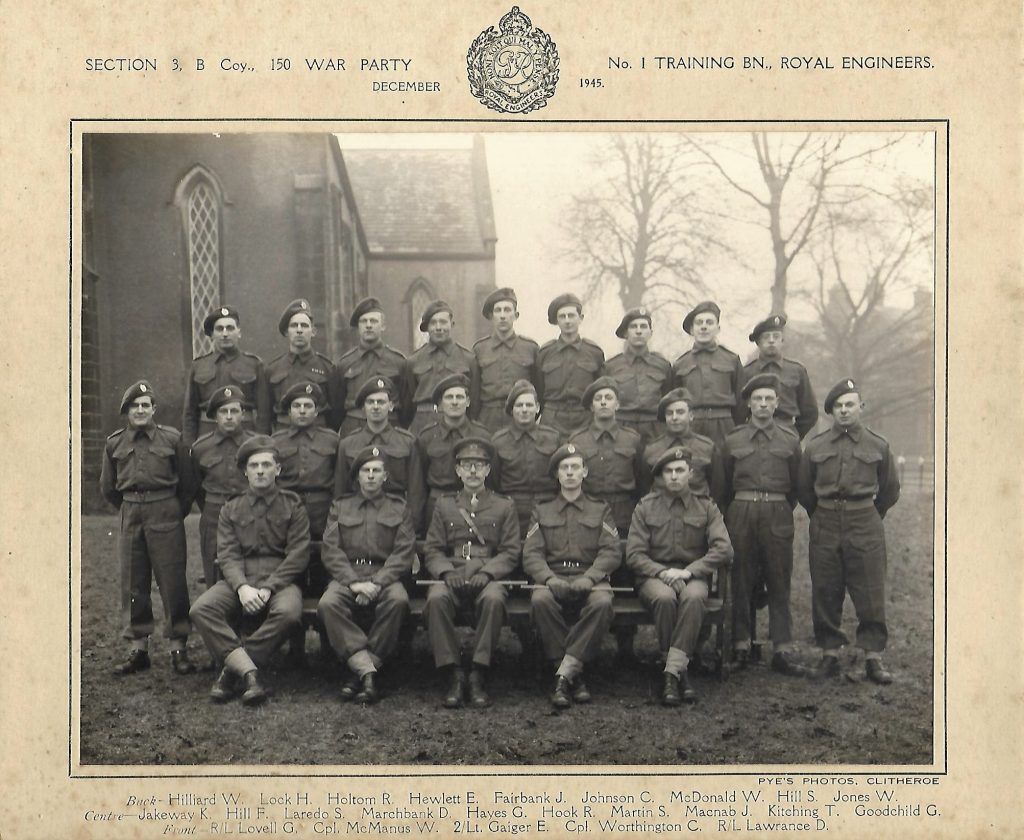
He was in Section 3 of the B Company, 150 War Party, No. 1 Training Battalion of the Royal Engineers. Willie identifies the two men left and right of the senior officer in the front row as their trainers. The formality of the men’s expressions suggests a commemoration of their passing their training. Willie’s allocation to the Royal Engineers would have come about because he had already studied one year of architecture at the Glasgow School of Art when he was called up.
A further group photo, unfortunately undated but with signatures on the back, shows Willie and company at Chatham, where the Institution of Royal Engineers continues to be located to this day.
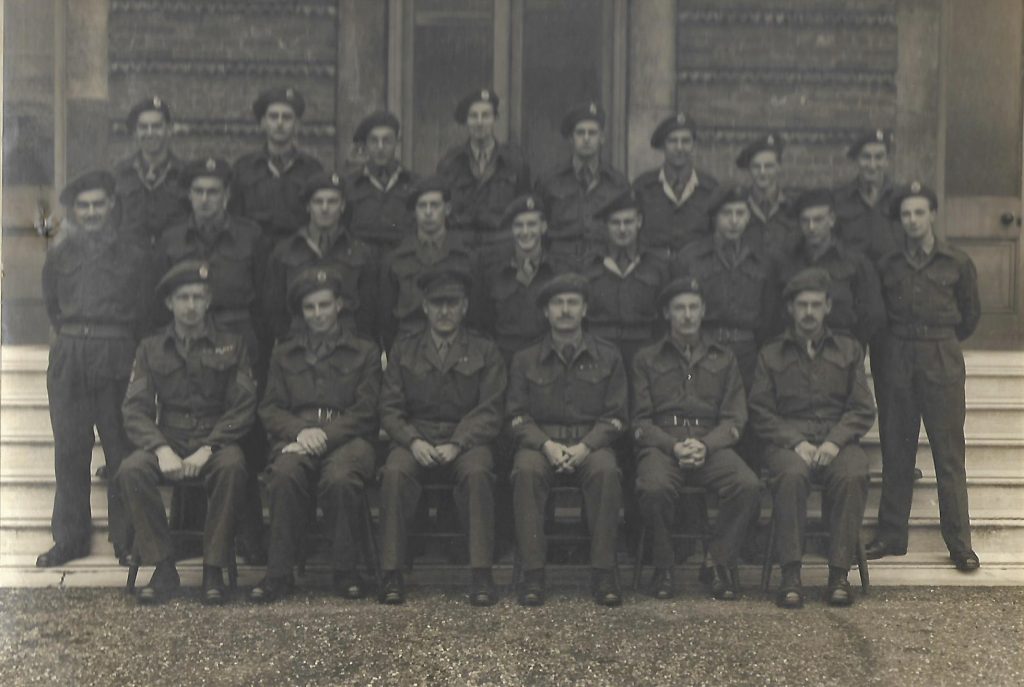
This is a new group of fellow Engineers, some smiling this time, more of a unit now perhaps? There is a clue that these are the twenty-two comrades who Willie will serve alongside in Germany in the presence here of one Bill Gurr (second row three from right). He will not only be Willie’s best friend during his time abroad, he will also in time become his brother-in-law when Bill’s twin brother Arthur marries Willie’s older sister Irene, and he will be best man at Willie’s own wedding to Bunty in 1954.
In general, relieved of the unpleasant prospect of having to take part in destruction and armed combat, Willie seems to have enjoyed the camaraderie of his time in the Engineers, particularly once he arrived in Germany.
He remembers having been involved in the construction of Bailey Bridges, probably with pontoon elements, though he says he never actually built any in Germany.
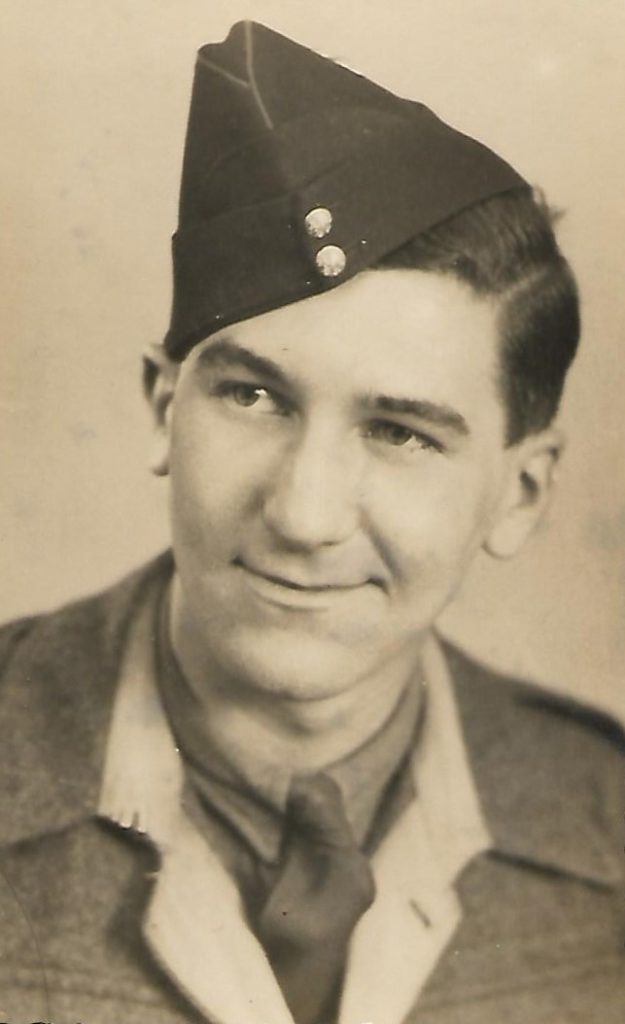
His battalion was accommodated in the “Waldkaserne” or “Forest Barracks” on the edge of the small town of Hilden, located roughly halfway between the cities of Dusseldorf and Wuppertal in the industrial northern Ruhr area of Germany.
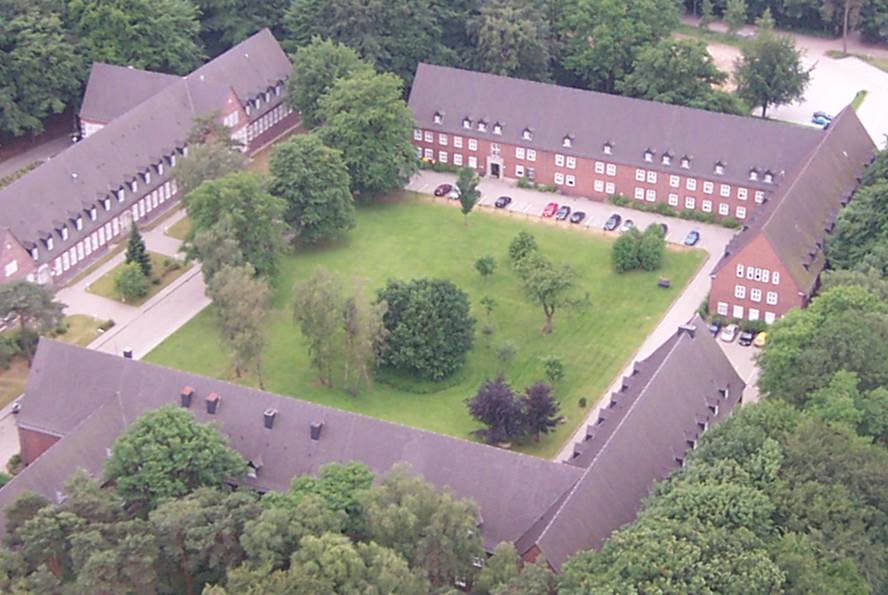
https://commons.wikimedia.org/w/index.php?curid=44792025
Completed in 1938 for the National Socialist (Nazi) Troops in the area, the Waldkaserne had been surrendered to liberating US Forces before being allocated to the British Army of the Rhein (BAOR) on 15 July 1945 as part of the division of Germany into occupation zones.
Hilden as a town had largely escaped the horrific flattening by Allied bombing raids suffered by large cities like Berlin and Dresden.
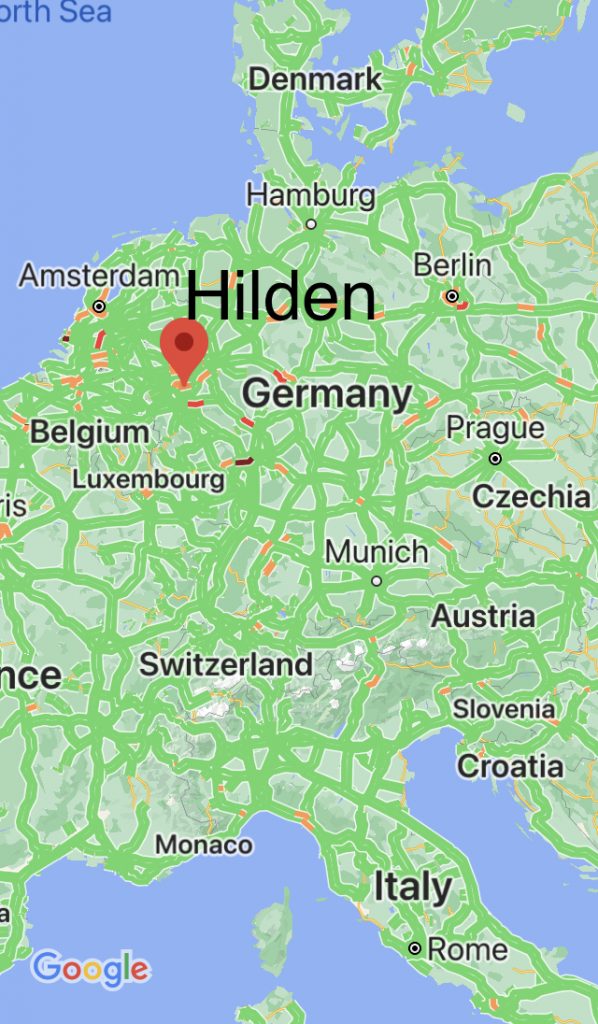
Not far from the barracks there was also the requisitioned Waldbald or “Forest Outdoor Swimming Pool”, a place where Willie seems to have spent many a happy hour when not on duty. The high diving boards got good use when he was around.
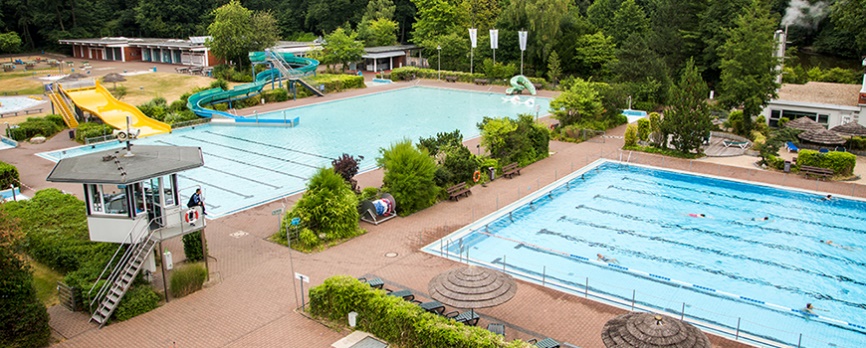
https://www.anzeiger24.de/hilden/waldbad-hilden
Edith McDonald estimates that her brother returned home around 1948. It’s a valuable reminder of the strong work ethic required of those returning from National Service at that time that Willie took up a job at the Housing Department by day while continuing his architecture degree at the same time. After four years of evening classes and completing Art School assignments on a drawing board propped up on an easel in his bedroom, Willie finally graduated from Glasgow School of Architecture on 4 June 1952.
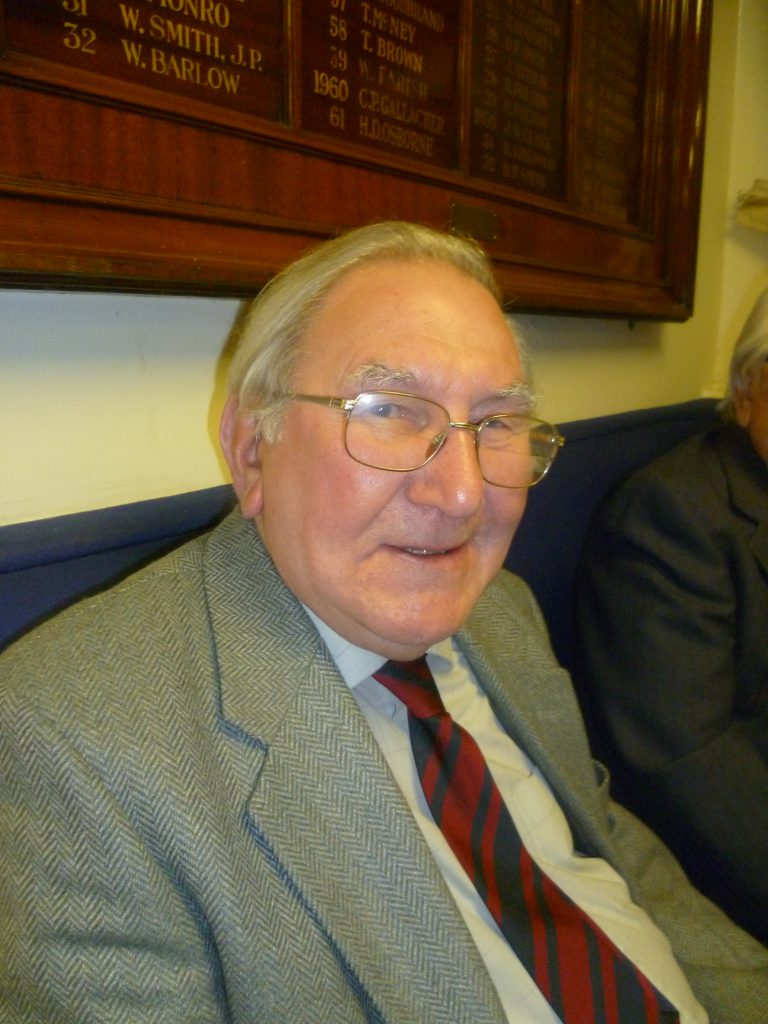
Willie a piper had played in Pipe Bands all of his life, including Rutherglen (along with Alex MacIver and Gus McDonald), Helensburgh & Clan Colquhoun Pipe Bands. He was also a regular attender of the Piping Club in Glasgow.
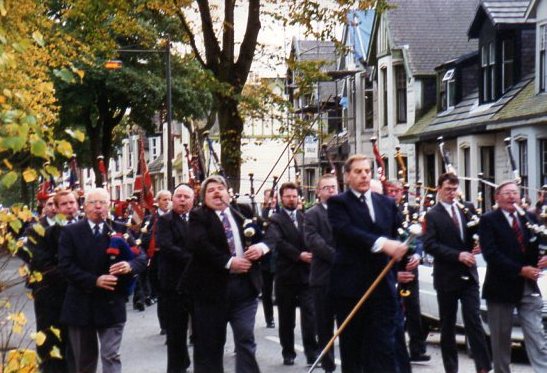
Lifelong friendships were made within the 214, especially with Tom McColl and Gus McDonald ‘The Three Amigos’, as seen here in March 1943.
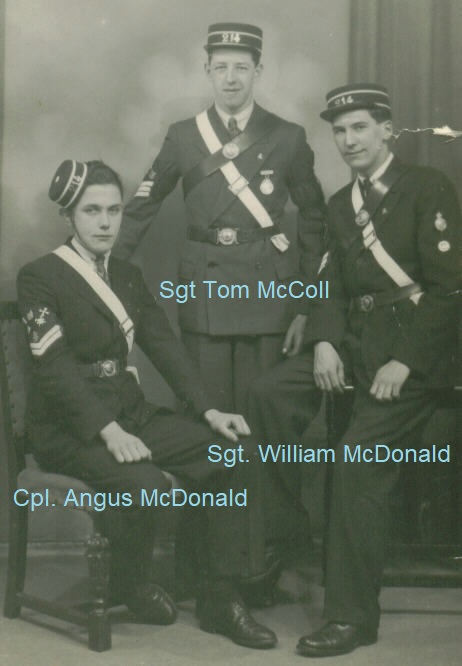
Willie wrote a great summary of his time in the 214 and BB life during the war years, this will be covered in a separate post.
